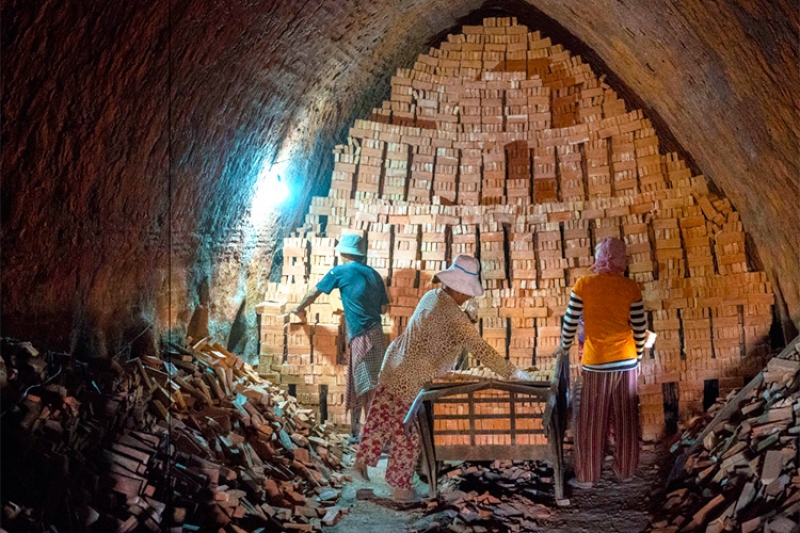Uncategorized
The Hidden Cost of Progress: The Plight of Cambodia’s Brick Kiln Workers
In the heart of Cambodia, an untold story of hardship unfolds within the walls of its numerous brick kilns. These facilities, vital to the nation’s booming construction industry, are also sites of severe human and environmental distress. This article delves into the lives of those who work under extreme conditions, the environmental ramifications of their labor, and the societal implications of such exploitation.
Life in the Heat: The Struggle of Brick Kiln Workers
In the shadow of Cambodia’s rapid urbanization, a less visible but equally significant transformation is happening in the lives of its brick kiln workers. These individuals, like Chantrea, a 47-year-old worker, endure the scorching heat daily, likening their workplace to a “burning prison.” Despite their toils, their pleas for better working conditions, such as additional fans to mitigate the heat, fall on deaf ears, underscoring a stark reality of neglect and disregard for worker welfare.
The conditions inside these kilns are perilous, with temperatures soaring to life-threatening levels. A pioneering study involving 30 workers revealed that all exhibited signs of heat stress, with core body temperatures exceeding the threshold of 38°C, risking severe health consequences including heat stroke and even death. The relentless heat, compounded by inadequate protection and the physical demands of the job, creates a hazardous environment, demonstrating a clear violation of basic human rights.
Environmental Implications: The Toxic Legacy of Fast Fashion
The brick kilns of Cambodia also serve as a poignant reminder of the global environmental crisis. Fueled by scraps from the fast fashion industry, these kilns emit toxic smoke that poses significant health risks not only to the workers but also to the surrounding communities. The use of clothing offcuts, laden with harmful chemicals, as a cheap source of fuel reveals a grim picture of environmental degradation and the unaccounted cost of consumerism.
This practice highlights a critical oversight in the waste management policies of major fashion brands, despite their claims of sustainability and ethical responsibility. The discovery of labels from prominent companies among the kiln fuels prompts a reevaluation of the fashion industry’s environmental footprint and its indirect contribution to the exploitation of vulnerable populations.
A Cycle of Debt and Desperation
Behind the operations of Cambodia’s brick kilns lies a disturbing cycle of debt and labor bondage. Many workers, like Chantrea, were once farmers driven to desperation by consecutive crop failures and mounting debts. The brick kilns offer a deceptive escape, trapping families in a cycle of debt that is nearly impossible to break. The promise of steady employment comes at the cost of their freedom, with wages insufficient to cover the basic necessities, let alone repay the debts that bind them to their employers.
This system of bonded labor not only exploits the most vulnerable but also perpetuates a cycle of poverty and dependency, highlighting the urgent need for intervention and support for these communities.
Towards a Fairer Future
The plight of Cambodia’s brick kiln workers is a stark reminder of the human cost of progress and the complexities of global inequality. As Cambodia continues to grow, it is imperative that this development does not come at the expense of its most vulnerable citizens. Addressing the challenges faced by brick kiln workers requires a multifaceted approach, involving:
- Enhanced Labor Protections: Implementing strict regulations to ensure safe working conditions and fair wages.
- Environmental Accountability: Encouraging sustainable practices within the fashion industry to prevent environmental degradation.
- Debt Relief Programs: Providing support for indebted workers to break free from the cycle of labor bondage.
The journey toward change is daunting but essential. It is a call to action for governments, industries, and consumers alike to reconsider the impact of their choices and to work collectively towards a more equitable and sustainable future.













